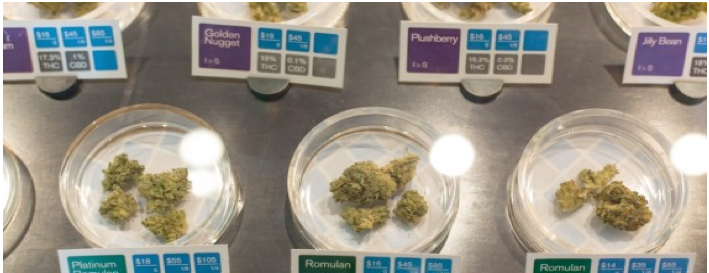WHO WE ARE-Anyone can be a medical cannabis patient in California. This rhetoric has plagued the inaugural medical cannabis state since 1996. Given the absence of a codified list of approved conditions from the legislature and willingness of many California doctors to embrace cannabis as a viable treatment and substitute for prescription drugs their patients don't want or can't tolerate, the assumption is that EVERYONE in California is a medical cannabis patient, or has had patient status at one time.
Because the state has no mandatory registry, it is very difficult to quantify just who is a patient in California. Without hard data, the assumptions flew about wildly, mostly based on observational data, such as who was hanging out at a dispensary, or who was shown on TV obtaining their recommendation on the 5 o'clock news.
For years, opponents of medical marijuana have claimed that California's medical marijuana law is a giant con job. But now the data are in, and they suggest that medical marijuana is used by a wide variety of people in California with an almost unheard of success rate.
A recent study published in Drug and Alcohol Review analyzed data from the 2012 California Behavioral Risk Factor Surveillance System, which is a state wide survey of behavioral health practices.
Included in this survey is a question about whether the respondent had ever used marijuana for therapeutic reasons and whether the marijuana was successful at treating their condition. The results were both expected and surprising.
Overall, about 5 percent of Californians have ever used marijuana for medical purposes. This is fairly low given the rhetoric by the anti-legalization camp, who claims that everyone in California is using medical marijuana because it is easy to do so.
Medical marijuana patients are also diverse, spanning all ages, geographic regions of the state and ethnicities.
However, medical marijuana patients are more likely to be white, male and in the 18-24 age group. These results are not surprising. Sanctions on medical marijuana use by female caregivers, such as the removal of children from the home and the increased risk of marijuana arrest among people of color, predict that white males would be the most likely group to engage in a formal medical marijuana program where they are visible as consumers.
Furthermore, stigma around marijuana use in certain age groups biases the behavior towards younger individuals. However, another aspect of the data speaks to something more important than demographics.
According to the researchers, 92 percent of those who used medical marijuana claim that it helped them. This is consistent with other studies which have shown high rates of satisfaction with medical marijuana. A 2007 study found that medical marijuana patients reported significantly higher levels of satisfaction with their medicinal use of marijuana than satisfaction with the overall health care system.
But the path to medical marijuana is not always direct. Several research studies have demonstrated high rates of substitution for prescription drugs and the use of medical marijuana after patients have exhausted their other treatment options. A 2009 study found that patients reported choosing marijuana over their other treatments because marijuana was more effective and presented fewer risks, such as overdose and withdrawal.
{module [862]}
{module [662]}
Regardless of age, gender or demographics, medical marijuana consumers are choosing marijuana instead of prescription drugs and other methods of treatment, and are overwhelming satisfied with their choice.
The differences between perception and reality when it comes to medical marijuana patients in California can best be summed up by the researchers, "Our study contradicts commonly held beliefs that medical marijuana is being overused by healthy individuals by collecting data from a representative, population-based sample of users and asking them why they use medical marijuana.
... Rather, medical marijuana is used at similar rates by men and women, young and old, high and low educated and in diverse regions throughout California. First, it is clear that Proposition 215 is helping people who are sick and use medical marijuana to treat serious medical conditions, including cancer, migraines and chronic pain, to manage their symptoms. Medical marijuana is not solely being used by young men who are accessing medical marijuana under the pretense that they have a serious medical condition and that they 'need' medical marijuana to treat it."
(Amanda Reiman is California Policy Manager, Drug Policy Alliance. This column was posted earlier at HuffingtonPost.com) -cw
CityWatch
Vol 12 Issue 80
Pub: Oct 3, 2014





